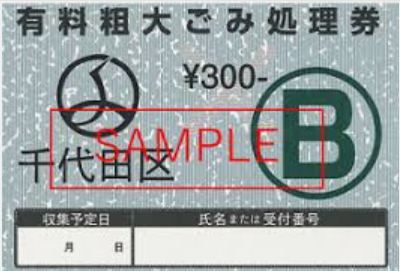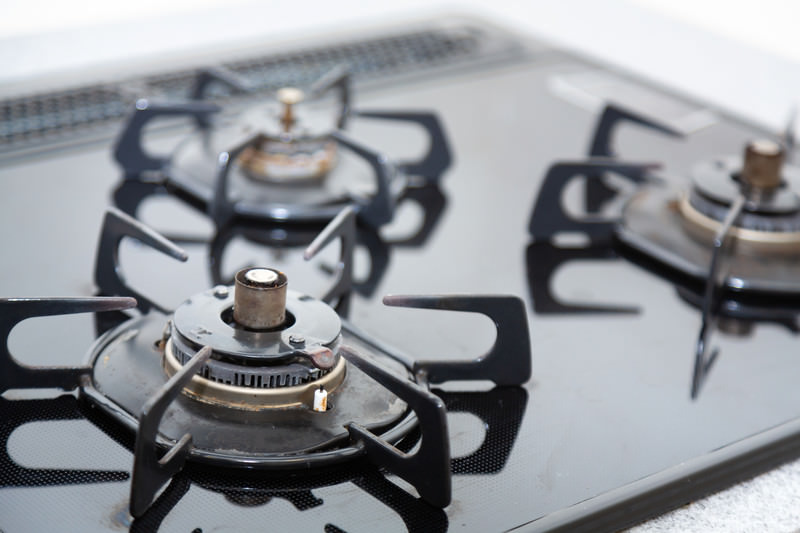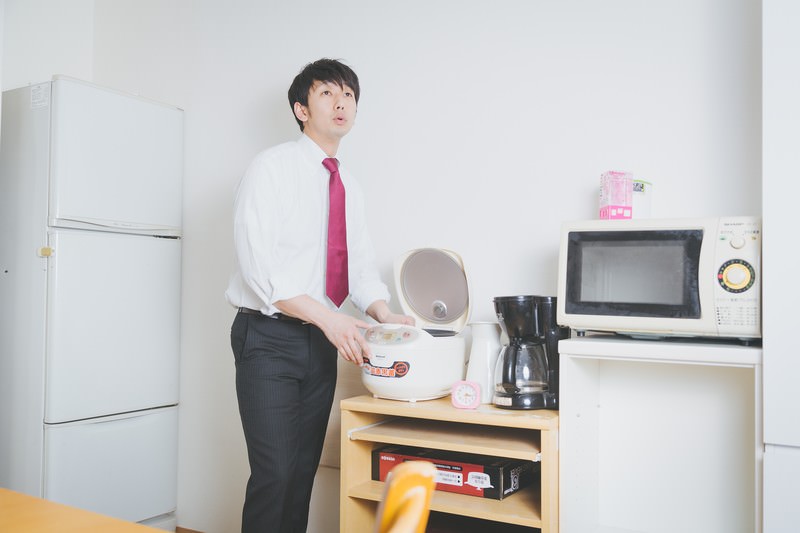Even when you’re moving within Japan—say, just across town or to a new ward—surprises still happen. Someone I advised once discovered their new ward used completely different garbage bags and pickup rules.
When you relocate inside Japan, you’ll still face lease changes, utility reactivation, and municipal paperwork—but with twists that only insiders know. Contracts may not transfer automatically. The address notation (town name, block numbers) might vary slightly enough to cause mail issues. And your move might trigger a need to re-register at a different local office.
This guide gives you a clear timeline + checklist for internal moves in Japan—what to do, when, and what small traps to watch out for. Let’s dig in.
📅 1+ Months Before Moving
🏠 Find and secure your new home
Start looking early, especially if you need a guarantor or company housing approval.
You can learn about contracts, key money, and deposits in our guide:
👉 [How to Rent an Apartment in Japan: Key Money, Contracts, and Housing Options]

🧹 Declutter and decide what to bring
In Japan, moving costs depend on weight and volume, so bringing less saves money. To sell or give away items, you can use Craigslist, but if you understand Japanese, Jimoty (ジモティー) and Mercari (メルカリ) have far more users and are much easier to use.
💡 Tip: When signing up for Mercari, you can use the invite code KTEZKC to get ¥500 worth of points for your first purchase.
Keep in mind that most Japanese apartments are completely unfurnished — you’ll need to provide your own furniture and appliances. Likewise, when moving out, everything must be removed to restore the room to its original condition, or you may be charged disposal fees.
🚚 Book a moving company
In Japan, moving season peaks in late March and early April, when prices can easily double. It’s smart to book at least a month ahead.
The usual Japanese way is to get quotes from several companies and compare prices before choosing.
To request a quote, you’ll need to share your current and new addresses, a list of your belongings, and your preferred moving date.
Filling in the same details again and again can be tiring, so many people use a comparison site like Hikkoshi Samurai (引越し侍), which lets you contact multiple movers with one form.
Popular companies such as Art Hikkoshi Center and Nippon Express also offer English-language support.
💡 Tip: Book early to get better prices and more flexible dates.
👧 If you have children
Before you move, ask your current school to issue a Certificate of Enrollment (在学証明書) and a Textbook Certificate (教科書給与証明書). After receiving these two documents, you’ll need to obtain a Transfer Admission Notice (転入学通知書) from the local Board of Education (教育委員会).
The process differs depending on whether you’re moving within the same city or to a different municipality, so it’s best to consult your current school in advance — they can guide you on when and where to apply.
📅 1 Month Before Moving
🏢 Notify your landlord
In most cases, you’ll need to give your landlord at least one month’s notice before moving out.
That’s the standard practice in Japan, and you’ll usually find it written in your lease agreement.
Check your contract or ask your real estate agent to confirm the exact notice period so you can plan your move smoothly.
Legally speaking, Japan’s Civil Code allows tenants to end a lease three months after giving notice, but most contracts shorten this to one month — and that’s what nearly everyone follows.
💡 Tip: Send your notice by email or letter so there’s a written record of when you contacted your landlord. It helps avoid any disputes later.
🌐 Arrange your internet transfer
Internet setup may involve on-site cable work (回線工事). Contact your provider early and confirm whether you can transfer your plan or need a new contract.
🪑 Apply for bulky waste (粗大ごみ) collection
Large items like furniture, bedding, or bicycles aren’t collected as regular trash. Apply for pickup through your city’s website, then buy bulky waste (sodai-gomi) disposal stickers at a convenience store. Attach the sticker and place the item outside on the assigned day.

💡 Tip: TVs, fridges, and washing machines fall under the Home Appliance Recycling Law — contact the retailer or manufacturer for collection.
🔥 Update your fire insurance
Report your new address to your insurance company so your coverage continues.
💡 Tip: Check if your fire insurance includes “liability coverage” (個人賠償責任補償 / personal accident compensation) — it often protects renters from unexpected accidents.
For example, if your child causes a bicycle accident that seriously injures someone, this coverage may pay for millions of yen in damages.
📅 1 Week Before Moving
🏛 Visit your city office
If you are moving to a new municipality, submit:
- Notification of Moving Out (転出届 / tenshutsu todoke)
- Receive a Moving-Out Certificate (転出証明書 / tenshutsu shōmeisho)
At the same time, process:
- National Health Insurance withdrawal (if enrolled and changing municipals)
- Motorbike deregistration (原付の廃車) (if applicable)
- Pet registration update — bring vaccination papers for your dog
⚠️ You must bring your Residence Card, My Number Card, and personal seal (hanko).

⚡ Contact your utility companies
You must cancel and reconnect gas, electricity, and water separately. Prepare your customer number (found on your latest bill) for smooth communication.
| Service | How to cancel or start | Notes |
|---|---|---|
| Gas | Call your local supplier; both disconnection and reconnection require an in-person visit. | Gas will not work until the technician opens the tap. |
| Electricity | Online via company website. | No in-person visit required. |
| Water | Contact your city’s Water Bureau. | A staff member may visit to check the meter and collect any remaining balance. |
🔗 See full list of major providers — electricity, gas, and water — below.
Major Electricity Companies
| Company | Phone | Hours |
|---|---|---|
| Hokkaido Electric Power | 0120-12-6565 | Weekdays 9:00–17:00 |
| Tohoku Electric Power | 0120-066-774 | Weekdays 9:00–17:00 |
| Tokyo Electric Power | Varies by area | Weekdays 9:00–17:00 |
| Chubu Electric Power | 0120-921-691 | Weekdays 9:00–19:00, weekends 9:00–17:00 |
| Kansai Electric Power | 0800-777-8810 | Weekdays 9:00–18:00 |
| Kyushu Electric Power | Varies by area | Weekdays 9:00–17:00 |
Major Gas Companies
| Company | Phone | Hours |
|---|---|---|
| Tokyo Gas | 0570-002211 | Mon–Sat 9:00–19:00 |
| Osaka Gas | Local branches | Mon–Sat 9:00–19:00 |
| Hokkaido Gas | 0570-008800 | Weekdays 9:00–19:00 |
Major Water Bureaus
| City | Phone | Hours |
|---|---|---|
| Tokyo Water Bureau | 03-5326-1100 | Mon–Sat 8:30–20:00 |
| Yokohama Water Bureau | 045-847-6262 | 24 hours |
| Osaka Water Bureau | 06-6458-1132 | Weekdays 8:00–20:00 |
| Fukuoka Water Bureau | 092-532-1010 | Weekdays 8:45–17:30 |
💡 Tip: For March–April moves, utility companies often have long waiting times. Call early!
✉️ Set up mail forwarding
Request forwarding with Japan Post either online or at your local post office.
Mail will be redirected for one year.
Note that credit cards and registered letters may not be forwarded for security reasons.
🔗 Japan Post Mail Forwarding Service
📦 Moving Day
At your old home:
- Meet gas and water inspectors.
- Settle final bills.
- Return your keys to the landlord.
At your new home:
- Meet the gas technician to open the tap.
- Confirm that electricity and water are working.
- Keep all receipts and contracts — they serve as proof of address.

🗂 Within 14 Days After Moving
🏛 Visit your new city office
Submit:
- Notification of Moving In (転入届 / tennyū todoke) or Change of Address (転居届 / tenkyo todoke)
- Present your Moving-Out Certificate (転出証明書)
Update:
- My Number Card
- National Pension
- National Health Insurance
If you own a motorbike, re-register it with your previous deregistration papers.
💡 Deadline: Within 14 days of moving in. Late submission can technically result in fines, though city staff are usually flexible if you explain politely.
👧 If you have children
Obtain an Admission Notice (入学通知書) from your city hall and submit it to your child’s new school along with the Certificate of Enrollment (在学証明書) and Textbook Certificate (教科書給与証明書) issued by the previous school.
Procedures and required documents may vary by grade or municipality, so it’s best to confirm with both schools in advance.
🚗 If you drive
- Update your driver’s license at your nearest police station.
- Apply for a Garage Certificate (車庫証明) at the same station.
- Bring it to the District Transport Bureau (陸運局) to complete your vehicle registration update.
🔍 Inspect your new home
Check walls, floors, and appliances for any pre-existing damage and report it immediately.
Doing this protects your deposit at move-out time.
📮 As Soon As Possible After Moving In
🏦 Update your address everywhere
Change your registered address for:
- Bank and credit cards
- Mobile phone carrier
- Insurance and employer records
- Delivery and e-commerce sites
🧾 Keep copies of all documents
Scan or photograph every document (notifications, certificates, receipts).
Japan often requires proof later for renewals, taxes, or other procedures.
💡 Helpful Tips
- Avoid peak season (March–April) — prices are highest then.
- Bring cash for city hall fees or movers.
- Keep ID handy — residence card and My Number card are required at nearly every step.
- Be polite, not perfect. Even if your Japanese isn’t fluent, a smile and “すみません、引っ越しの手続きです” usually go a long way.
📋 Moving Checklist in Japan — Summary
Before wrapping up, here’s a quick overview of everything you need to do, in order.
Use it as a last-minute reference before or during your move.
💡 Tip: Screenshot or print this checklist so you can tick off tasks as you complete them.
| 🕒 When | ✅ What to Do |
|---|---|
| 1+ Months Before | • Find and sign a new home. • Declutter and decide what to bring. • Book a moving company early (especially before March–April). • [If you have children] Request school transfer certificates. |
| 1 Month Before | • Notify your landlord of your moving-out date. • Arrange internet disconnection/reconnection. • Apply for bulky waste (粗大ごみ) collection. • Update your fire insurance address. |
| 1 Week Before | • Visit city hall to submit a moving-out notification (転出届) and receive the certificate (転出証明書). • Withdraw from NHI, deregister motorbike or pet if needed. • Contact electricity, gas, and water providers for cancellation. • Schedule a gas technician visit. • Set up Japan Post mail forwarding. |
| Moving Day | At old home: Close accounts with gas/water inspectors, return keys. At new home: Meet gas technician to open the line, confirm electricity/water setup. |
| Within 14 Days After Moving | • Visit your new city office to submit a moving-in (転入届) or address change (転居届). • Update My Number, NHI, and Pension records. • [If you have children] Submit school documents and receive admission notice. • Update driver’s license, garage certificate, and vehicle registration. • Inspect your new home for damages. |
| After Moving In | • Update your address for bank, credit card, insurance, employer, and online accounts. • Keep digital copies of all documents for future reference. |
✅ Conclusion
Moving in Japan might feel complicated at first, but once you understand the order of steps, it becomes surprisingly manageable.
By planning ahead, keeping documents organized, and staying polite at every counter, you’ll make your transition smooth and stress-free.
Remember:
- Call utility companies early.
- Keep your residence card handy.
- Don’t panic if you miss a deadline — staff are usually understanding.
With a bit of preparation, your move can become more than a task — it’s your first step toward a fresh chapter of life in Japan. 🌸


5 thoughts on “Moving within Japan — Complete Timeline for Expats”